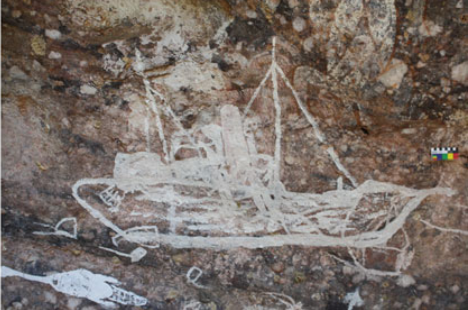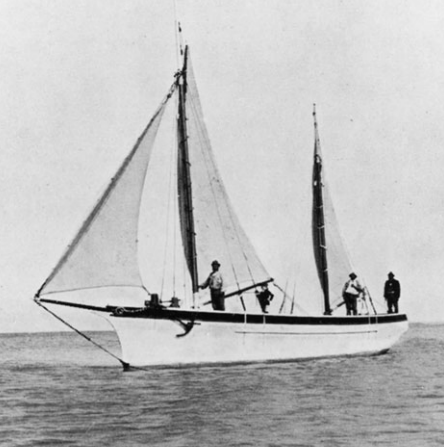
Non-Indineous Watercraft in Indigenous Rock Art
In 2008, researchers from the Australian National University and Flinders University recorded nine watercraft rock art images in the Malarrak rock-shelter in the Wellington Range of northwestern Arnhem Land in the Northern Territory (NT), Australia as part of a research project entitled Baiyini, Macassans, Balanda & Bininj which aimed to study non-Indigenous and Indigenous culture contact through archaeological investigations in the region. During the project, it was recognized that one of the missing elements of interpreting watercraft in rock art was a comprehensive analytical framework that can be tested and reproduced. Researchers developed a framework to describe and quantify Indigenous depictions of non-Indigenous watercraft in rock art in a similar way that maritime archaeologists describe elements of ships and shipwrecks: by their technological elements, features, and attributes. The developed framework can be used as a baseline for future researchers to study non-Indigenous watercraft depictions systematically across Australia.

The (Re)locating Narruga Project
At the turn of the twentieth century, the Narungga Aboriginal community at Point Pearce Mission (Yorke Peninsula, South Australia) built Narrunga, a ketch which was later sunk in the 1940s. The (Re)locating Narrunga Project was launched in 2012 as a collaborative effort between communities and researchers to relocate the vessel and record the Indigenous communities’ maritime heritage. The primary focus was to afford community members and organizations to record their knowledge and Indigenous voices throughout the entirety of the project, from project design, archival research, and collection of oral histories, to archaeological fieldwork, and analysis and writing. During the project, researchers recorded oral histories and lived experiences, analyzed written documents and visual images, and conducted geophysical surveys, inter-tidal zone, and terrestrial survey and recording to learn more about the vessel Narrunga. It is revealed that non-Indigenous records have been complicit in underplaying the maritime achievements and skills of Narungga people but this collaborative research helps to decolonize their past. In her dissertation, Madeline Fowler builds upon the (Re)locating Narrunga Project by investigating Aboriginal involvement in maritime activities within a post-contact mission context with Point Pearce Mission/Burgiyana as the case study (Fowler 2015).
For more information about the (Re)locating Narrunga Project check here.
